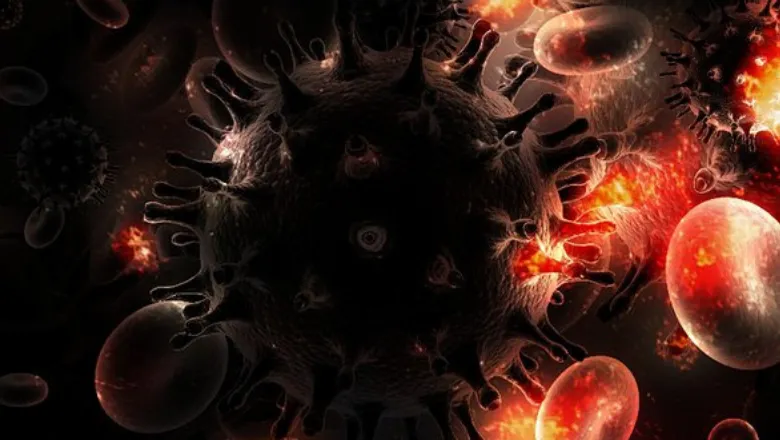It was somewhat anti-dogmatic to find that human TRIM5 is an effective natural inhibitor of HIV infection. We now need to understand how this antiviral regulatory pathway works, and whether its manipulation may have future clinical utility in either treating HIV infections or enhancing genetic therapies.
Professor Michael Malim, lead author of this study
20 March 2019
New protein identified that stops HIV virus growth – potential drug target?
Researchers have identified a restriction factor protein that inhibits viral DNA synthesis.

HIV-1, the virus that causes AIDS, is naturally suppressed by the human immune system for extended periods. When the virus enters the body, it stimulates the immune system to respond by activating antiviral proteins called ‘restriction factors’ and are considered one of the body’s critical first lines of defence against infection.
HIV-1 grows by integrating into the host’s genomic DNA and makes use of many host cell mechanisms to grow and produce more viruses in the body.
Researchers from the School of Immunology & Microbial Sciences recently published in Nature Microbiology describing their findings that a specific restriction factor called ‘TRIM5’ stops HIV-1 replicating and growing by preventing viral DNA synthesis.
Before this study, TRIM5 has been has long been overlooked as having and ability to stop HIV-1 growth. More specifically, TRIM5 was thought to be important for preventing viral infections across species, rather than having a role once a host becomes infected.
These new findings imply there is potential forTRIM5 to be exploited for therapeutic benefit. It is possible that by stimulating TRIM5, this could further suppress virus infection, whereas blocking it will increase infection. The latter scenario may be valuable in the context of gene therapy where HIV-based vectors are used to deliver beneficial genes to specific human cell targets.
The next steps in this research are to understand exactly how TRIM5 works to determine how it suppresses the growth of HIV-1.
Read the full paper online here.
